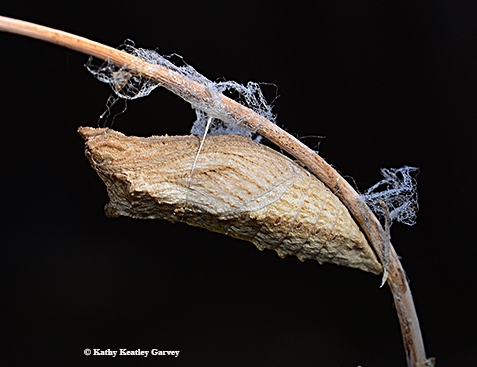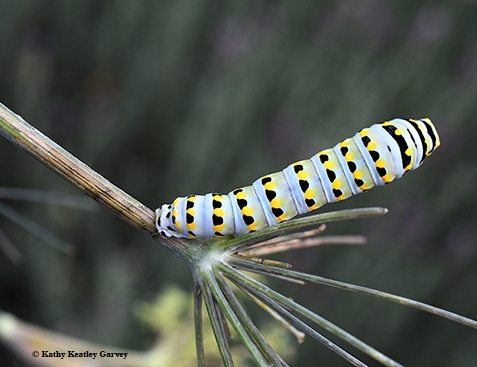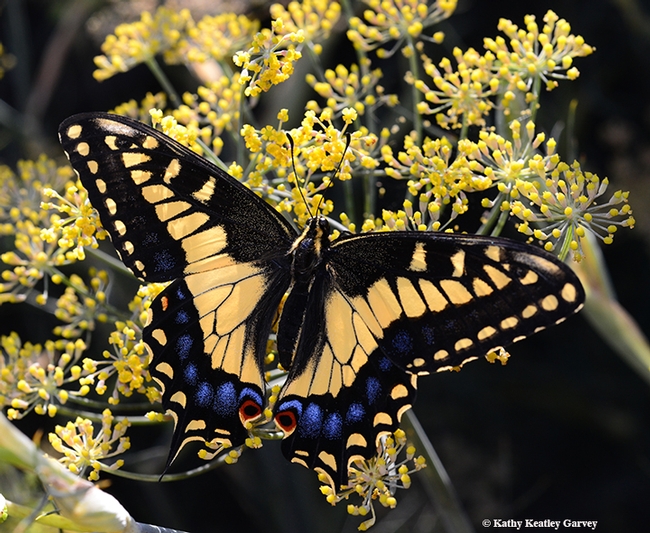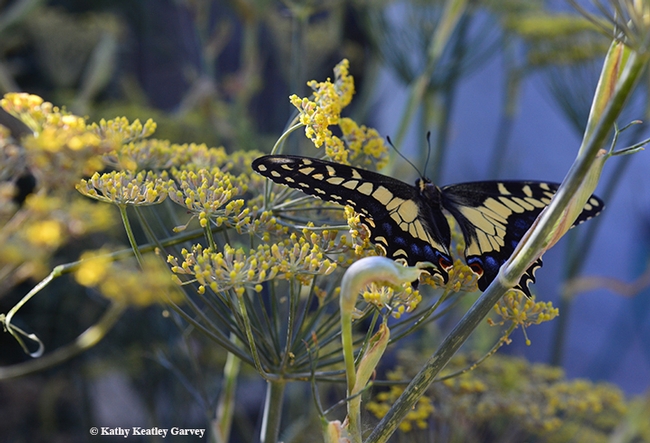

And she's beautiful!
It all began with finding two anise swallowtail chrysalids clinging last July to the fennel stems in our pollinator garden in Vacaville, Calif.
To protect them from predators and the elements, we tucked them inside a zippered net butterfly habitat and placed “the prized package” in the corner of a laundry room to await the spring of 2018--and eclosure.
The first day of spring, March 20, came and went. Then 288 days slipped by. The chrysalids remained intact. Were they viable?
We showed images of the chrysalids to butterfly guru Art Shapiro, distinguished professor of evolution and ecology at the University of California, Davis, who's been researching the butterfly population of central California for more than four decades.
“They both look OK—the intersegmental membranes are not showing,” he said. “Stick them in the refrigerator for a month and try again. If they are a coast range population, some may diapause up to 5 years. If a valley population, multiyear diapause is very unusual.”
Shapiro advised that we “put them in a lidded container” to prevent their drying out. “Diapausing pupae only breathe once or twice a day.”
So, on June 5, in the refrigerator they went, joining assorted cups of yogurt, bags of fruits and vegetables, jars of peanut butter, cartons of fat-free milk and what-have-you.
What a life!
Then on July 4, Independence Day (but with no fanfare, ceremony or celebration) out they came. (The yogurt, fruits and vegetables, peanut butter, milk and what-have-you stayed behind.)
We placed the (probably) thoroughly confused chrysalids back in the butterfly habitat, but this time, outdoors, and right next to their host plant, fennel. Daytime temperatures climbed to 100 degrees and night temperatures dropped into the 50s.
Nothing happened. Nothing.
Just as we were wondering if they were still viable, we saw a winged burst of yellow, black and blue on Sunday night, July 14. A long-awaited eclosure!
It's a girl! (as identified by Professor Shapiro). (Read more about the anise swallowtail, Papilio zelicaon, on his website.)
Early Monday morning, we dipped a fennel blossom into a mixture of 10 parts water and one part honey. Food! She drank heartily. Then we placed her atop the towering fennel so she could warm her flight muscles.
Two hours later, Ms. Anise Swallowtail became part of the Wonderful World of Butterflies. She circled the house, returned to nectar on the Mexican sunflower (Tithonia), and left. No fanfare, no ceremony, no celebration. This is her world now.
The other chrysalis? It remains intact. Fingers crossed that it, too, will survive.
It doesn't get much better than this--in a world where kindness matters. It always has.
Attached Images:

